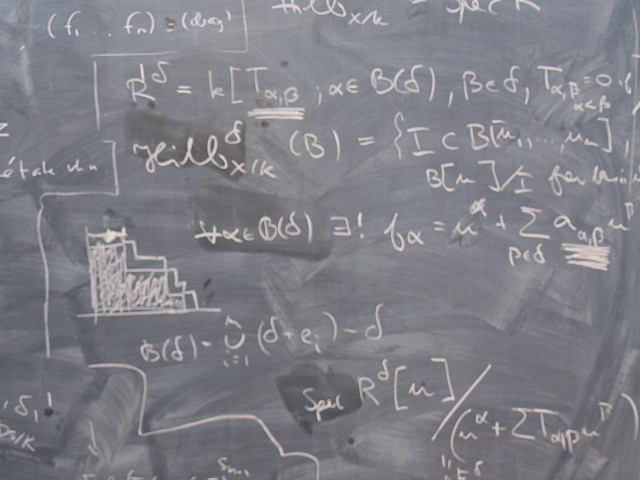Groups, permutations, homomorphisms, group actions, rings, ideals, modules, fields and field extensions.
SF2729 Groups and Rings 7.5 credits
This course has been discontinued.
Decision to discontinue this course:
No information inserted
Information per course offering
Course offerings are missing for current or upcoming semesters.
Course syllabus as PDF
Please note: all information from the Course syllabus is available on this page in an accessible format.
Course syllabus SF2729 (Autumn 2013–)Content and learning outcomes
Course contents
Intended learning outcomes
After the course, the student shall be able to pursue abstract reasoning about algebraic structures. The student shall be trained in logical thinking and in constructions of mathematical proofs. Algebraic structures appear in many disciplines within Science and Technology. The student shall be able to recognize and use such structures in his or her forthcoming work. Concretely, this means that the student shall be able to:
- Identify and describe fundamental algebraic structures such as groups, rings and fields,
- Identify algebraic substructures such as subgroups, subrings and ideals,
- Identify and describe relations between algebraic structures, such as homomorphisms and group actions,
- Define and use bijective functions between algebraic structures, with special attention to permutations,
- Use classical results in basic group theory and ring theory, such as Lagrange's theorem or Cauchy's theorem, to describe the structure of the group or the ring,
- Explain relations using mathematical proofs and logical reasoning,
- Formulate certain practical problems by means of algebraic structures.
Literature and preparations
Specific prerequisites
SF1604 Linear algebra or corresponding courses are required prerequisites.
Literature
David S. Dummit, Richard M. Foote: Abstract Algebra, 3rd Edition
Examination and completion
Grading scale
Examination
- TEN1 - Examination, 7.5 credits, grading scale: A, B, C, D, E, FX, F
Based on recommendation from KTH’s coordinator for disabilities, the examiner will decide how to adapt an examination for students with documented disability.
The examiner may apply another examination format when re-examining individual students.
If the course is discontinued, students may request to be examined during the following two academic years.
One written exam which can partly be replaced by homework assignments and one mid term exam.
Grade scale A, B , C, D, E, Fx, F.
Examiner
Ethical approach
- All members of a group are responsible for the group's work.
- In any assessment, every student shall honestly disclose any help received and sources used.
- In an oral assessment, every student shall be able to present and answer questions about the entire assignment and solution.
Further information
Course room in Canvas
Offered by
Main field of study
Education cycle
Supplementary information
The course is replaced by SF1678.